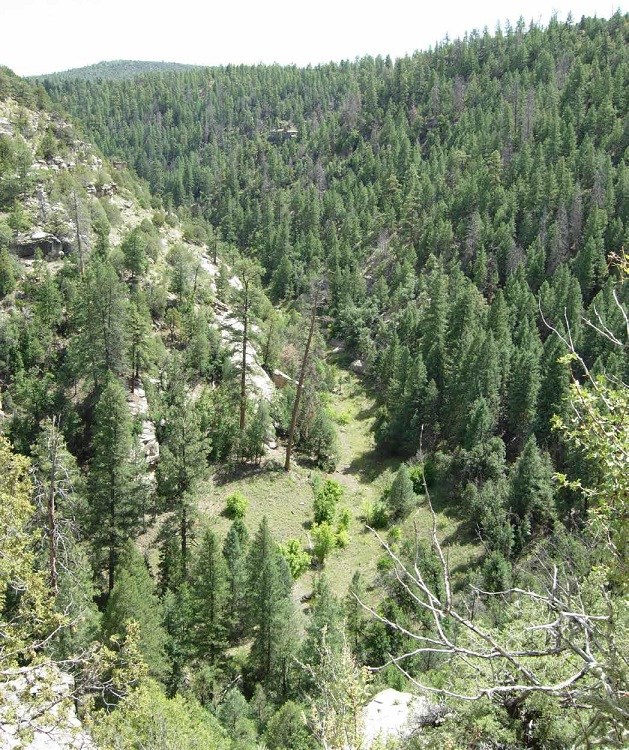Learn about NRCAs
The Natural Resource Condition Assessment (NRCA) Program provides framework, funding, and publishing support to parks to aid in the synthesis and documentation of natural resource conditions. Condition assessment reports are a tool to describe selected park resources, and record a snapshot of their current condition, identify trends, and identify potential or current threats and stressors. Understanding the condition and trend of natural resources is key for parks and NPS planners to appropriately prioritize and allocate stewardship resources.

NPS Photo.
The canyon is a place of concentrated biological productivity because of its varied exposures and elevations, together with seasonal water, all compressed into a narrow band within a surrounding pine forest. The canyon twists and turns, creating a patchwork of sun and shadow. Hot dry desert-like slopes and shaded forests, normally separated by thousands of feet in elevation, are found here almost side by side. With these overlapping habitats come unusual assortments of plants and animals, and a high concentration of sensitive species. At the same time, the canyon serves as an important wildlife migration corridor, linking higher elevation forests with lower pine-juniper woodlands to the east.
Traditional NRCA Report: 2018
In an effort to better understand and manage the natural resources of the monument, a Natural Resource Condition Assessment was completed, and published in 2018. Staff from the National Park Service (NPS) and Utah State University worked together to identify the natural resources and stressors to include in this condition assessment. The final report includes ten resource topics:
- Viewshed |
||
- Night sky |
||
- Soundscape |
||
- Air quality |
||
- Cherry Pools in Cherry Canyon |
||
- Walnut Creek riparian area |
||
- Ponderosa pine forest |
||
- Non-native invasive plants |
||
- Birds |
||
- Mexican Spotted owl and inner canyon environment |
The study showed that condition of the natural resources varied. Two topics were determined to be in good condition: viewshed and birds. The Mexican Spotted Owl and associated inner canyon environment was rated as good to of moderate concern, the latter due to data gaps. Cherry Pools in Cherry Canyon were rated as in good to unknown condition due to limited data. Five topics were of moderate concern: night sky, soundscape, air quality, ponderosa pine forests, and non-native invasive plants. The remaining topic was of significant concern: Walnut Creek riparian area. The resources at Walnut Canyon National Monument face many threats due to an ever-increasing human population within and surrounding Flagstaff, Arizona and increasing temperatures and erratic precipitation events due to climate change. A proactive science program will become even more important in influencing resource conditions and identifying necessary adaptations in this rapidly changing environment.
For other reports and natural resource datasets visit the NPS Data Store.
Source: NPS DataStore Collection 7765 (results presented are a subset). To search for additional information, visit the NPS DataStore.
Last updated: September 25, 2024
